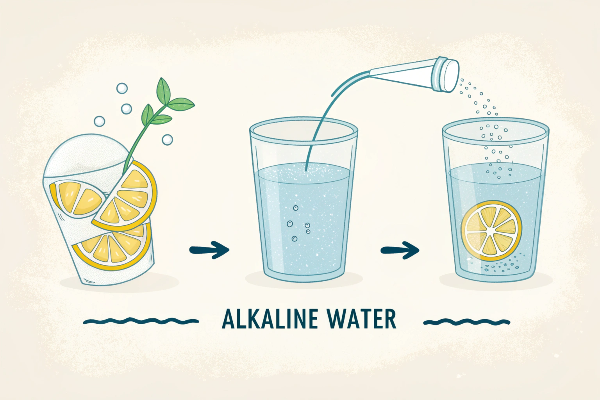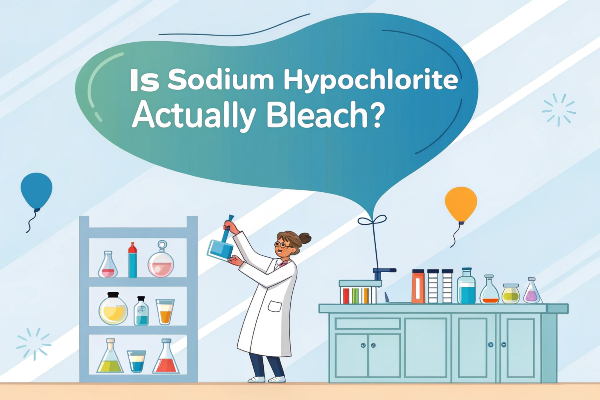Are you struggling with sudden efficiency drops in your electrowinning process? Electrode passivation might be the silent culprit, slowly eating away at your productivity and profits.
The good news is that you can prevent electrode passivation. By taking proactive steps like monitoring voltage, and using the right cleaning solutions, you can stop passivation before it impacts your operation.

But what exactly does this entail, and how can you tailor these preventative measures to your specific setup? Let’s dive into the practical steps and considerations to keep your electrowinning system running smoothly.
What are the early signs of titanium anode passivation in copper electrowinning systems?
Do you want a way to predict passivation without shutting down your entire system? Imagine the headache of unexpected downtime and the scramble to get things back on track.
Early detection1 is key. Look for unusual voltage spikes (like a 10% jump above your normal levels) and keep a close eye on the electrolyte and cathode for changes.

Dive Deeper: Real-Time Monitoring and Visual Cues
Passivation doesn’t happen overnight. It’s a gradual process, and that gives you a window of opportunity to catch it early. Here’s how I approach it:
- Real-Time Voltage Monitoring2: I always set up a system that continuously monitors the anode voltage. When the voltage starts creeping up consistently, that’s a red flag. Think of it like a "check engine" light for your electrowinning system. A 10% increase above the baseline is usually my trigger point to investigate further.
- Visual Inspection3: Don’t rely solely on the numbers. Get your team to regularly check the electrolyte and the cathode. Is the electrolyte getting cloudier? Are you seeing unusual formations, like dendrites, on the cathode? These visual cues can be early warning signs of passivation.
| Indicator | Normal State | Potential Passivation Sign | Action |
|---|---|---|---|
| Voltage | Stable, baseline | >10% increase | Investigate anode, electrolyte |
| Electrolyte Clarity | Clear | Turbid, cloudy | Check for contaminants, anode condition |
| Cathode Deposition | Smooth, uniform | Dendrites, uneven | Check current density, anode condition |
By combining real-time data with regular visual checks, you can create a robust early warning system. I remember one time, at a mine I was visiting, because of the consistent monitoring, we were able to solve the voltage issue before it escalated.
Does the coating type (e.g., IrO2 vs. RuO2) affect passivation resistance in high-sulfate electrolytes?
Are you facing a decision about which anode coating to use, and worried about choosing the wrong one? Selecting the wrong coating can be like picking the wrong tool for a job – it simply won’t perform as well, or for as long.
It turns out that the choice between IrO2 and RuO2 does matter, especially in high-sulfate environments. RuO2-TiO24 coatings generally show a 20-30% higher passivation threshold in these conditions.

Dive Deeper: Coating Selection and Performance
Choosing the right coating isn’t just about picking the most expensive option. It’s about understanding the specific demands of your electrolyte. Here’s what my experience has taught me:
- RuO2-TiO2 Advantage: In sulfate systems, RuO2-TiO2 coatings tend to outperform pure IrO2. This is because the ruthenium oxide component provides better resistance to the passivation effects of high sulfate concentrations. I’ve seen this firsthand in several operations, where switching to RuO2-TiO2 significantly extended anode lifespan.
- Gradient Composite Coatings: When the sulfuric acid concentration gets really high (above 150 g/L), I’d recommend considering a gradient composite coating, something like Ru/Ir/Ta. These coatings are designed to handle extreme conditions.
Here is a simple table to help explain different anode coatings:
| Coating Type | Sulfate Resistance | Cost | Recommended Use Case |
|---|---|---|---|
| IrO2 | Moderate | Moderate | Lower sulfate concentration |
| RuO2-TiO2 | High | Moderate | Moderate to high sulfate concentration |
| Ru/Ir/Ta (Gradient) | Very High | High | Very high sulfate concentration |
These coatings are specifically engineered to combat the intensified passivation effects that occur in those aggressive environments.
How to adjust pH and temperature to prolong titanium anode lifespan in nickel electrowinning?
Are you looking for simple, cost-effective ways to extend the life of your anodes? Sometimes, the smallest tweaks can make the biggest difference.
Control the pH, keeping it in the 1.5-2.0 range, and maintain your electrolyte temperature5 between 45-55°C. It’s that straightforward.

Dive Deeper: Optimizing Process Parameters
It’s tempting to think that you need to invest in new equipment or expensive coatings to improve anode lifespan. But often, the solution lies in optimizing the basic parameters of your process. Here’s my take on it:
- pH Control is Crucial6: Nickel electrowinning is particularly sensitive to pH. If the pH gets too low (too acidic), it can accelerate the dissolution of the anode coating. Aim for a pH between 1.5 and 2.0. This range provides a good balance between nickel deposition efficiency and anode protection.
- Temperature Matters: Keep the electrolyte temperature within the 45-55°C range. Higher temperatures can increase the rate of oxygen evolution, a side reaction that contributes to passivation.
| Parameter | Optimal Range | Too Low | Too High |
|---|---|---|---|
| pH | 1.5 – 2.0 | Accelerated anode coating dissolution | Reduced nickel deposition efficiency |
| Temperature | 45 – 55°C | Reduced reaction rate | Increased oxygen evolution, passivation |
By diligently controlling these two parameters, you can create a more favorable environment for your anodes, extending their lifespan without resorting to more drastic measures. It’s about working smarter, not harder.
Can periodic polarity reversal prevent titanium anode scaling and passivation?
Are you looking for an easy, low-cost way to tackle scaling and passivation, especially in older equipment? Polarity reversal might be a good option.
Switching the polarity for a few minutes every few hours can help dissolve the oxide film that builds up on the anode surface.

Dive Deeper: The Mechanics and Limitations of Polarity Reversal
Polarity reversal is a bit of a "quick fix" – it’s not a perfect solution, but it can be effective, especially in older systems where you’re looking for a simple retrofit. Here’s my perspective:
- How it Works: By briefly reversing the polarity, you essentially turn the anode into a cathode for a short period. This causes the oxide layer that has built up on the anode surface to dissolve.
- Frequency and Duration: I recommend switching the polarity for about 2-5 minutes every 8 hours. This is usually enough to disrupt the passivation process7 without causing significant damage.
- Cautions: Be careful not to overdo it. Frequent reversals (more than 3 times a day) can actually damage the anode coating and the seals of your electrolytic cell.
| Frequency | Duration (minutes) | Effect | Caution |
|---|---|---|---|
| Every 8 hours | 2-5 | Dissolves oxide film, prevents buildup | May damage coating with excessive frequency |
It’s a balancing act. You want to reverse the polarity often enough to prevent passivation, but not so often that you cause other problems.
What cleaning solutions effectively remove passivation films from titanium anodes without damaging coatings?
Are you looking for a safe and effective way to clean your titanium anodes on-site? Using harsh chemicals like hydrofluoric acid is not only dangerous but also outdated.
A 5% oxalic acid solution8, combined with ultrasonic cleaning9, is a great way to remove sulfate scale10 with minimal coating wear.

Dive Deeper: Safe and Effective Cleaning Practices
Cleaning your anodes is a necessary part of maintenance, but it’s crucial to do it in a way that doesn’t damage the valuable coating. Here are some guidelines that I recommend:
- Oxalic Acid and Ultrasonics: I’ve found that a 5% oxalic acid solution8, combined with ultrasonic cleaning, is a very effective way to remove sulfate scale. The oxalic acid helps to dissolve the scale, while the ultrasonic action provides gentle agitation to dislodge it. And the best part? The coating wear rate is typically less than 0.1μm per cleaning.
- Avoid Mechanical Grinding: Whatever you do, don’t use mechanical grinding! It might seem like a quick way to remove scale, but it will severely damage the conductive layer of the coating.
| Cleaning Method | Effectiveness | Coating Wear | Safety | Recommendation |
|---|---|---|---|---|
| Oxalic Acid (5%) + Ultra | High | <0.1μm/cleaning | Safe | Recommended for routine cleaning |
| Mechanical Grinding | High | Very High | Potentially | Strictly avoid, will damage coating’s conductive layer |
Remember, the goal is to remove the passivation layer without damaging the underlying anode. Gentle, chemically-assisted cleaning is the way to go.
Conclusion
By understanding the early signs of passivation11, choosing the right anode coating12, optimizing process parameters, using polarity reversal13 wisely, and employing safe cleaning methods, you can protect your investment and maintain efficient production. Start by proactively controlling voltage, and pH of your process today.
-
Understanding early detection can help you prevent costly downtimes and maintain system efficiency. ↩
-
Explore how real-time monitoring can enhance your system’s reliability and prevent passivation issues. ↩
-
Learn why regular visual checks are crucial for identifying potential problems before they escalate. ↩
-
Explore the advantages of RuO2-TiO2 coatings to understand how they can enhance performance in high-sulfate conditions. ↩
-
Learning about optimal electrolyte temperatures can lead to better anode performance and longevity in your operations. ↩
-
Understanding pH control can significantly enhance your anode lifespan and overall efficiency in nickel electrowinning. ↩
-
Learning about the passivation process can provide insights into improving the performance of your electrochemical systems. ↩
-
Explore this link to understand how a 5% oxalic acid solution can safely clean titanium anodes without damaging coatings. ↩ ↩
-
Learn about ultrasonic cleaning techniques and their benefits for maintaining titanium anodes effectively. ↩
-
Discover the nature of sulfate scale and effective removal methods to keep your titanium anodes in top condition. ↩
-
Understanding the early signs of passivation can help you prevent corrosion and extend the life of your metal components. Explore this link for detailed insights. ↩
-
Choosing the right anode coating is crucial for effective corrosion protection. Discover expert recommendations and comparisons in this resource. ↩
-
Polarity reversal can significantly impact electrochemical processes. Learn more about its effects and applications in this informative article. ↩





